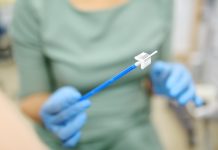Researchers at the Institute of Genomics of the University of Tartu find new links between polycystic ovary syndrome (PCOS) and genetics
Polycystic ovary syndrome is the most common endocrine disorder for women. It can be discovered through irregular periods, high levels of androgen hormones and/or enlarged ovaries with many follicles containing the eggs – known as polycystic ovaries – which might affect fertility and the risk for other metabolic disorders.
Published in the journal Human Reproduction, genome-wide association studies were conducted by the research team to search for these variants in PCOS. This study is vital, as the origins of PCOS remain unknown.
“It is likely that both genetic and environmental factors contribute to PCOS development”
The authors were able to analyse genetic data of over 233,000 women from the Estonian Biobank and the FinnGen study coordinated by the University of Helsinki – which enabled the identification of unique genetic risk factors in PCOS.
Triin Laisk, Associate Professor at the Institute of Genomics, said: “It is a multifactorial condition, meaning both genetics and environmental or lifestyle factors increase the risk.
“This technique compares the genetic material (DNA) sequence in women with polycystic ovary syndrome, for instance, to women without the condition and allows the identification of sequence changes which are more frequent in the group with the trait of interest.”
In this study, only including Estonian and Finnish women, two new rare genetic variants that increase the risk for PCOS are highlighted, which will probably affect the gene CHEK2.
CHEK2 encodes for a protein which is a key factor in the quality control of cells, and for the repair of damage in the DNA. CHEK2 has been also linked to ovarian reserve and variation in age at menopause.
A previous study, using a similar approach, used an expansive selection of women from diverse European populations. It identified genes involved in DNA repair, maturation of the ovarian follicles that contain the oocytes, cell growth and division, and synthesis of androgen hormones, amongst others, to be linked to PCOS.
PhD student Natàlia Pujol Gualdo, co-first author of this work, added: “Due to differences in demographic history, the enrichment of some variants in Finnish and Estonian populations provided a unique opportunity to capture novel rare genetic variants associated with polycystic ovary syndrome when focusing only on these populations
Laisk added: “Further research is needed to explore the role of CHEK2 variation in polycystic ovary syndrome and we hope this study serves as a base for further experiments that can clarify their interplay.
“At the same time, this study highlights the importance of population-specific biobank initiatives as unique means to seek into the genetic landscape of complex diseases”.
The study, co-led by colleagues from the University of Oulu, forms a basis for partnership to potentially study the genetic underpinnings of diverse female reproductive conditions, acquiring distinctive data from Estonian and Finnish participants.











